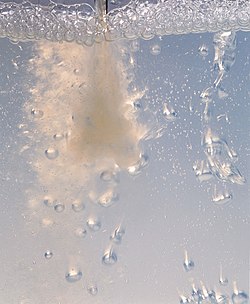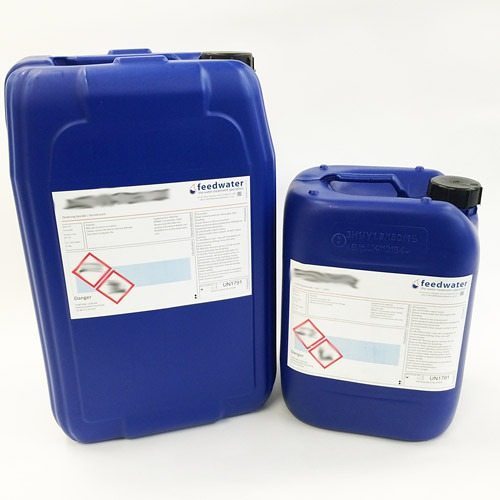How to Pick the Right Chemical Defoamer for Your Unique Requirements
Discovering the Advantages of a Chemical Defoamer in Production and Production
The assimilation of chemical defoamers in manufacturing and manufacturing processes supplies a tactical benefit by addressing one of the consistent obstacles in industrial procedures: foam control. As producers make every effort to enhance procedures and improve consumer fulfillment, the role of chemical defoamers ends up being increasingly crucial.
Significance of Foam Control
While the presence of foam in manufacturing procedures can sometimes seem safe, reliable foam control is essential for enhancing functional efficiency and product top quality. Foam can interfere with numerous stages of production, resulting in inadequacies that might raise costs and extend handling times. In sectors such as food and drink, pharmaceuticals, and chemicals, unrestrained foam can block equipment, interrupt automated systems, and eventually lead to product variances.

Carrying out reliable foam control techniques not just enhances performance however additionally sustains regulatory compliance in sectors where foam can lead to environmental worries. By making use of chemical defoamers, manufacturers can reduce these difficulties, making certain smoother procedures and higher-quality final result. Inevitably, prioritizing foam control is a vital facet of production that can generate substantial advantages in terms of performance, product, and safety integrity.
Kinds of Chemical Defoamers
What kinds of chemical defoamers are offered for producing processes, and how do they differ in application? Chemical defoamers can be classified right into three main types: silicone-based, natural, and not natural defoamers. - Chemical Defoamer

Organic defoamers, normally derived from fatty acids or all-natural oils, work in a series of applications, consisting of food and beverage production. They are usually preferred for their reduced toxicity and environmental effect, making certain compliance with industry policies.

Each sort of defoamer serves distinctive functions based on the chemical structure and the particular demands of the manufacturing procedure, allowing makers to pick the most ideal option for their particular requirements.

Advantages in Production Performance
Chemical defoamers play a crucial role in enhancing manufacturing performance by effectively managing foam generation during numerous procedures. Foam can hinder manufacturing rates, interrupt equipment procedure, and bring about pricey downtime. By incorporating chemical defoamers, manufacturers can mitigate these concerns, making certain smoother workflow and enhanced overall from this source efficiency.
Using chemical defoamers aids maximize the operational efficiency of equipment such as pumps, activators, and mixers. With minimized foam, these equipments can run at their meant capacity, lessening the risk of overflow and allowing consistent handling. This results in far better resource use and higher throughput.
Additionally, chemical defoamers help with faster handling times by decreasing the time required for foam elimination. This velocity can significantly impact manufacturing timetables, allowing suppliers to fulfill client need better. In addition, using defoamers contributes to decrease energy consumption, as equipment runs much more successfully with lowered foam interference.
Influence On Product High Quality
Foam control is not just necessary for maintaining effectiveness in making procedures yet likewise plays a significant function in making certain item quality. Excessive foam can present air right into formulations, resulting in incongruities in the end product. This can materialize as defects such as spaces, unequal textures, or subpar coatings, which undermine the intended high quality and performance of the item.
In addition, foam can impede the homogeneity of combinations, leading to irregular distribution of energetic components. In industries such as this contact form coverings, cosmetics, and food manufacturing, this can cause variations in shade, preference, and total efficiency. By utilizing a chemical defoamer, makers can alleviate these risks, making certain that items satisfy rigorous quality specifications.
Furthermore, managing foam can boost the stability of suspensions and solutions, which is important for making sure shelf-life and customer complete satisfaction. With improved product consistency and reduced defects, manufacturers can accomplish greater standards of quality control, eventually bring about enhanced customer trust fund and brand loyalty.
Cost-Effectiveness and ROI
Effective foam control not only boosts item top quality however additionally adds considerably to the overall cost-effectiveness of producing procedures. The use of chemical defoamers reduces foam-related concerns, which can or else bring about production hold-ups, equipment breakdowns, and boosted power intake. By minimizing foam, makers can maximize their processes, bring about higher throughput and effectiveness.
Buying chemical defoamers can generate a substantial return on investment (ROI) The first costs related to these additives are commonly offset by the cost savings realized from decreased downtime and enhanced material yield. Improved item quality can lower waste This Site and revamp costs, even more reinforcing economic performance.
Additionally, effective foam control can result in decreased water and power use, adding to lower operational costs. This is specifically vital in industries where resource effectiveness is critical. By integrating chemical defoamers right into their procedures, makers can attain lasting financial savings while preserving competitive prices in the industry.
Conclusion
In final thought, the combination of chemical defoamers in production and production processes is vital for enhancing operational effectiveness and improving product quality. Reliable foam control adds to better devices performance, reduced handling times, and lessened downtime, inevitably causing considerable cost savings. In addition, regular product formulations foster customer contentment and brand name loyalty. The benefits supplied by chemical defoamers not just support governing conformity however also give a competitive side in the production landscape.
The combination of chemical defoamers in production and manufacturing procedures offers a calculated advantage by addressing one of the consistent challenges in commercial operations: foam control.While the existence of foam in manufacturing procedures can sometimes appear safe, effective foam control is vital for optimizing functional efficiency and item quality.Chemical defoamers play a critical role in boosting manufacturing effectiveness by effectively managing foam generation throughout various procedures.In addition, chemical defoamers help with faster handling times by lowering the time required for foam removal. In addition, the usage of defoamers contributes to reduce power usage, as machinery runs much more successfully with decreased foam interference.